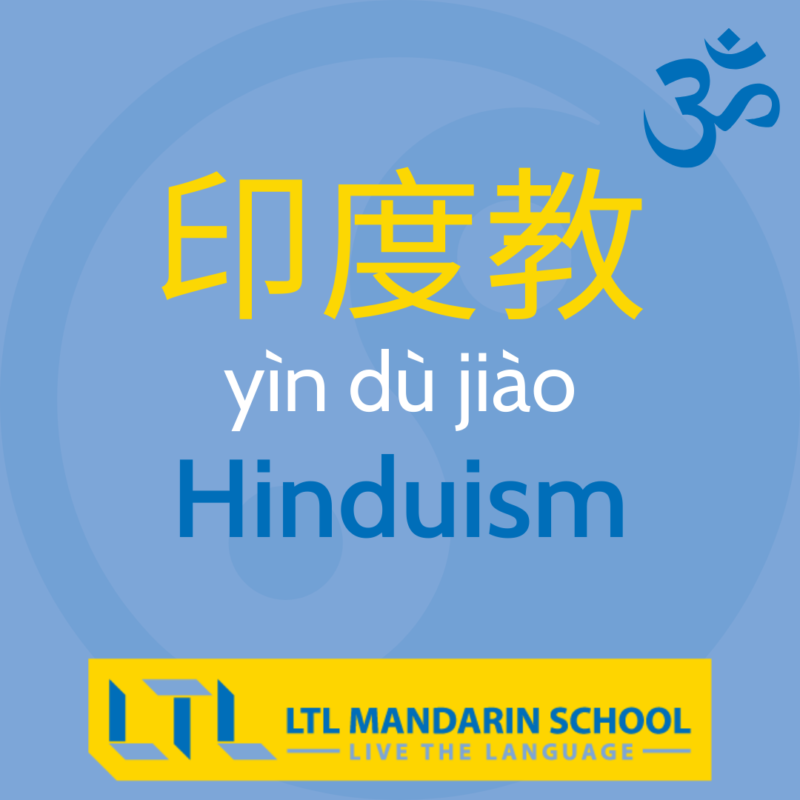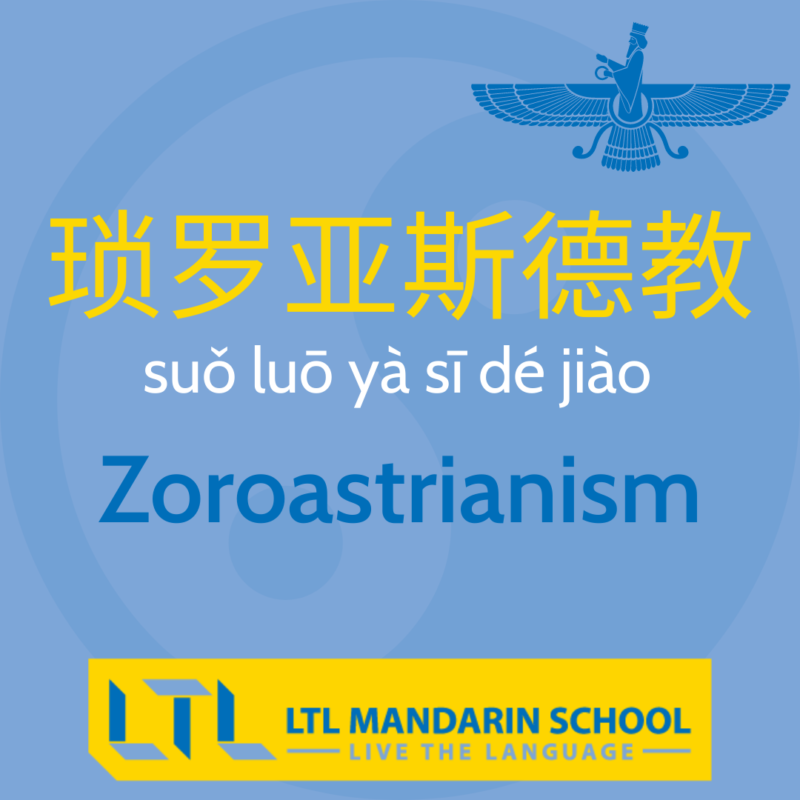Definitive Guide to Religion in China 🌏 What Are The Most Followed Religions Worldwide?
An Ultimate Guide to Religion in Chinese with LTL Mandarin School

China religion can be a mysterious topic, but it doesn’t have to be!
Chinese Civilization has long hosted a variety of religions of the world.
Officially, The People’s Republic of China is an Atheist state, however, many Chinese people are religious.
The main religions in China are Buddhism, Chinese folklore, Taoism and Confucianism.
QUICK VOCAB CHECK – Religion in Chinese is 宗教 zōngjiào.
This short video will give you a better idea of the main China religion and their place in Chinese history and culture.
Let’s walk through the top religions of the world (ranked by followers) and some of their intertwining’s with China.
China Religion – Contents
Christianity – 2.1 billion followers worldwide

Christianity popped its head in China’s door around the 7th century in the Tang dynasty but it didn’t really take root in the country until the 16th century.
Between the 16th and 17th century The Catholic Church did something known as Missions of the Jesuits in China.
These were missionary efforts that played a significant role in transmitting knowledge, science and culture between China and the West.
At the peak of the Jesuits mission work in China, some members were the emperor’s most valued and trusted advisors.
Today there are approximately 31 million Christians in China making up 2.3% of the total population.
Islam – 1.3 billion followers worldwide

It is believed that Islam was first bought to China by an embassy led by Sa’d ibn Waggas in 651 less than 20 years after the death of Muhammad.
Emperor Gaozong of Tang who received the envoy, soon after order the construction of the first mosque in the country to be built in memory of Muhammad.
The Mosque is called Huaisheng Mosque and is located in Guangzhou. It’s been rebuilt a few times but still stands as one of the oldest in the world.
Islam became much more widespread from the 7th to the 10th centuries due to silk road. The first major Muslim settlements in China consisted of Arab and Persian merchants.
Today, Hui Muslims make up the largest group of Muslims in the country with the greatest concentration living in Xinjiang.
There are approximately 6.2 – 25 million Muslims in China making up 0.45% – 1.8% of the total population.

Just How Large is China Really 😲 Size Matters
How Big is China? 🐲 Size Matters – China is huge. We have some incredible facts just to prove how large China really is, 48 facts to be precise!
Nonreligious – 1.1 billion people worldwide

If Atheism were a religion they’d be booming in China.
61% of the population consider themselves to be atheist.
This makes China the world’s largest irreligious population.
The Chinese government is officially atheist and their attitude toward religion is one of scepticism and non-promotion, however, religion is not banned, and religious freedom is nominally protected under the Chinese constitution.
Before you read on, for a quick geography lesson on where you’ll find the most densely populated religions check out this video.
Hinduism – 900 million followers worldwide

Hinduism did not become a popular religion in China.
However, Hindu influences such as yoga and meditation did become popular throughout the country due to the spread of Buddhism.
There are further examples of Hindu influence on ancient Chinese religion seen in the belief of ‘six doctrines’ and other stories and expressions that can be traced back to Hindu mythology.
Hinduism is only practised by a small minority in China.
Chinese Traditional Religion – 394 million followers worldwide

Chinese Traditional Religion or Chinese Folk Religion, in its present form, can be dated back to the Sung Dynasty (960-1279).
Chinese Folk Religion is comprised of elements of Taoism, Buddhism and Confucianism but is considered to be an entirely different religion to all three.
Many followers also follow a collection of beliefs that are ingrained in Chinese cultures such as shamanism, ancestor worship, magic, ghosts and other spirits.
All these overlapping elements make the religion very difficult to define due to the unofficial mixture.
It’s estimated that 23% of Chinese people practice Chinese Traditional Religion.
Want to learn some cool space terminology and how astrology was used in Chinese religion?

Space in Chinese 🌍 70+ Words about The Solar System and Beyond
Want to learn all about the Solar System in Chinese (太阳系). We teach you everything about our Solar System including the planets, moons and stars in Mandarin
Buddhism – 535 million followers worldwide

Next up Buddhism…
Legend has it that Buddhism dates back to ancient times around 206 BCE!
However, definitively we can say Buddhism came to China in the first century during the Han dynasty through missionaries from India.
Today there are an estimated 244 million Buddhist living in China, making it the largest population of Buddhists in one country.
Sikhism – 23 million followers worldwide

Sikhism is a religion that originated in the Punjab region in the northern part of India. It started in the 15th century.
During the 1800s and 1900s, many Sikh Punjabi people were recruited from British India to work as officers for the Shanghai Municipal Police and the Hong Kong Police.
There are still Gurdwara (Sikh temples) in Gurdwara Shanghai and Khalsa Diwan Hong Kong.
Sadly, the last Shanghai Sikh left in 1973 back to India.
Judaism – 14 million followers worldwide

China’s first came into contact with the Jewish people as a result of the ancient trading route of the Silk Road created in the Han Dynasty in 206 BCE.
The first group of Jewish immigrants popped up in China in the Tang Dynasty (618 – 907 CE).
However, very few communities from this time maintained continuous faith as most became more or less assimilated due to marriage into the wider Han Chinese population.
In the late 20th and early 21st centuries, some international Jewish groups helped Chinese Jews rediscover their Jewish heritage.
In the 19th and early 20th centuries, Jewish merchants from around the world began to trade in Chinese ports. In particular Hong Kong, Shanghai and Harbin.
In the first half of the 20th century, thousands of Jewish refugees arrived in China escaping the 1917 Russian Revolution. And again, in the 1930s and 1940s, tens of thousands of Jewish refugees arrived in Shanghai fleeing Nazi Germany.
While most have moved on, several relics from this time have been preserved in Shanghai.
Spiritualism – 13 million followers worldwide

Spiritualism is a metaphysical belief that the world is made up of matter and spirit.
This is broken down further by descriptions of spiritual entities such as a soul, afterlife, deities and mediums.
In the 17th century Qing dynasty an offshoot of Spiritism formed in China called Xiāntiān Dào (先天道). This translates to ‘Way of Former Heaven’.
It is characterised by a concern for salvation and moral fulfilment of the person and society.
They claim to represent a way that transcends and unites all other religions.
There are groups that claim their teachings unify the “Three Religions” (Confucianism, Taoism, Buddhism) and the “Five Religions” (first 3 pus Christianity and Islam).
Spiritism numbers are low in China however there is growing popularity for faith healers and yoga preachers across the country.
The Art of Living foundation an NGO focused on social transformation with Yoga and Meditation now has 55 Chinese teachers who hold classes across 20 cities in China.
Bahai – 7 million followers worldwide

Bahai Faith is a religion teaching the essential worth of all religions and the unity and equality of all people.
It was established in 1863 by Bahá’u’lláh and initially grew in Persia and parts of the Middle East and soon after came to China.
The Bahai community became firmly established in Shanghai after several pioneers moved there and published the first Chinese publication of their texts in 1921.
In 1928 the Local Spiritual Assembly in China was formed and other smaller communities began to emerge in Beijing, Guangzhou and Harbin.
Apologies you won’t find subtitles to this video but if you really want to put your Chinese listening skills to the test. Check out this video of Professor Degui Cai the leading scholar of the Baha’i Studies in China talk about its History in China.
Today there are an estimated 6000 Bahá’ís in China.
Shinto – 4 million followers worldwide

The word Shinto (Way of the Gods) was written in Chinese Shendao (神道 shéndào) combining shin (神), meaning “spirit” and michi (道), meaning “path”.
This is derived from the Chinese word ‘dào’.
Shinto (神道 Shintō) is an indigenous religion of Japan that focuses on ritual practices to be carried out diligently to establish a connection between present-day Japan and its ancient past.
It was established in the 6th Century CE in connection with Buddhism.
It appears Shinto has been more influenced by China rather than China influenced by Shinto.
This is seen by the exports into Japan such as Buddhism, relics, mythological stories and even the Chinese invention of paper to create origami.
Today there are 127,282 Japanese nationals living in the Republic of China. Approximately 80% of these people follow Shintoism (101’800 people).
Tenrikyo – 2.5 million followers worldwide

Tenrikyo (天理教 Tenrikyō) is a Japanese new religion that originated from the teaching of a 19th-century woman named Nakayama Miki also know to her followers as Oyasama.
Followers of Tenrikyo believe that God of Origin, God in Truth.
They teach an ideal known as Joyous Life which is cultivated through acts of charity and mindfulness.
A Tenrikyo Mission Center was built in Hong Kong in 1978
Zoroastrianism – 190,000 followers worldwide

Zoroastrianism is one of the world’s oldest religions dating back to 5th century BCE that remains active today.
Followers of Zoroastrianism believe in a single creator God. Teachings come from the Iranian-speaking prophet Zoroaster. Today the religion mostly exists in India and Iran.
There are records of Zoroastrian colonies in China during the early 4th century CE and it became a recognised religion in Northern China during the 6th century.
In 651 there was the Arab conquest of Iran that lead to the end of the Sasanian Empire of Persia. In 661 Periz III son of Yazdegerd III the last king of Persia fled to China to ask for military help to take back control of his empire. Emperor Gaozong of Tang granted him control as commander-in-chief of an area now known as Zaranj, Afghanistan to allow Sasanian refugees fleeing from the Arab conquest to settle in China.
Zoroastrianism was practised in China up until the 9th century.
Want a free EBook on Learning Chinese?
Religion in China – FAQ’s
How do you say Religion in Chinese?
Religion in Chinese is 宗教 zōng jiào
How do you say Christianity in Chinese?
基督教 jī dū jiào
How do you say Buddhism in Chinese?
佛教 fó jiào
How do you say Islam in Chinese?
伊斯兰教 yī sī lán jiào
How do you say Sikhism in Chinese?
锡克教 xí kè jiào
Want more from LTL?
If you wish to hear more from LTL Mandarin School why not join our mailing list.
We give plenty of handy information on learning Chinese, useful apps to learn the language and everything going on at our LTL schools! Sign up below and become part of our ever growing community!

 Hi, my name is Mojca. I am from Slovenia in Europe and I work as a student advisor at our Beihai school.
Hi, my name is Mojca. I am from Slovenia in Europe and I work as a student advisor at our Beihai school.


14 comments
[…] 66. 52% of the population do not consider themselves to be religious. […]
[…] are vegetarian or vegan can be difficult in China. A good way to be understood is to say you are Buddhist (佛教) fó jiào. Typically people will understand your diet if you say […]
[…] There are plenty of vegans and vegetarians getting by just fine in China! Actually there is a large buddist population living in China so all Chinese people have a good understanding of the buddist vegetarian […]
[…] content to help you learn mandarin and get an understanding of Chinese culture, history, food, religion, travel and much […]
[…] people don’t realize that China is a very diverse place, a home to 56 officially recognized ethnic groups (and many more unofficial […]
[…] Want more information about the religions in China? […]
Thanks LTL, was struggling to find anything about the different religions in Chinese!
Ellen
Thanks Eugenio, We’re happy you’re enjoying our stuff! Plenty more content on our YouTube, podcast and social media.
[…] 66. 52% of the population do not consider themselves to be religious. […]
[…] find really, really tasty vegetarian dishes at Buddhist temples/monasteries all over China, because Chinese Buddhist cuisine is mostly […]
[…] Fanjingshan is a sacred mountain of Chinese Buddhism. […]
[…] has three very strong points as far as practising Buddhism is […]
Fantastic guide for learning about all the different religions in China I too was struggling to find a decent and informative guide!
[…] Source: 🔗 […]